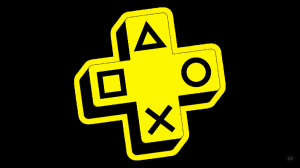Marvel’s The Inhumans has been criticized for a lot of reasons, but one key problem that a lot of fans are noticing is that the show may expect viewers to be rooting for the wrong team.
Videos by ComicBook.com
The two-part debut of Marvel’s Inhumans, “Behold…The Inhumans!” and “Those Who Would Destroy Us,” saw Maximus (Iwan Rheon), the more-or-less human prince of the Inhumans, stage a coup against his brother, King Black Bolt (Anson Mount), and the rest of the Inhuman Royal Family.
The show presents this as a kind of populous uprising. Maximus is leading the literally powerless in Inhuman society, who have been forced to work in the mines of Attilan because they have no other skills that Inhuman society, as dictating by the Royal Family, deem useful.
The metaphor is most obvious during the Terrigenesis ceremony that takes place in the first episode. In the scene, two Inhuman youths are exposed to the Terrigen Mists. One emerges with wings and the Royal Family openly celebrates the birth of a new flier. When the other child emerges with no discernible powers, his family mourns the lack of transformation and the fate their child has now inherited.
Considering the blatant caste structure in place here, many are left wonder why they should feel bad when Maximus leads a revolution again the monarchy. As far as Inhumans show us, the coup is even almost entirely bloodless, with the only ones put out by the change in the balance of power being the royals themselves, at least until Maximus decides he needs to kill a member of the genetic council.
And that’s part of the problem. It feels like the Inhumans is banking on viewers hating Maximus because he kills and because he’s kind of creepy. And yes, he is kind of creepy. Wanting a character to be at least kind of creepy is why you hire Iwan Rheon, the actor who played the sociopathic Ramsay Bolton on Game of Thrones, to play the character in the first place.
But while Maximus killing a member of the genetic council may make some feel conflicted towards him, it does nothing to make viewers sympathize with the Royals. Not to mention, the victim was a member of the genetic council. His job was literally to judge people and place them in a caste based on their genetic makeup. In most other works of speculative fiction, the genetic council would be the mustache-twirling villains of a dystopian society that audiences couldn’t wait to see overthrown.
And there’s also that whole “we should invade the Earth” thing, but that seems like such a distant, empty threat compared to the actual oppression of Inhuman society that the show fails to make Maximus’ point of view feel out of balance. In the end, the show seems to be trying to inform us that Maximus is the villain of the piece because his motivations don’t do that job for us.
Mishandling the Source Material

Part of the problem is that Marvel’s Inhumans seems to be trying to retell the story of Paul Jenkins and Jae Lee’s Marvel Knights Inhumans series, but loses a lot of the nuance in the transition from comics to television.
Like the show, the story involves the Inhumans’ isolation from humanity. At the time, Attilan was located on Earth as opposed to the moon but was still a separate society. Conflict begins when mercenaries stage an outright assault on Attilan. It is the Royal Family then who petition Black Bolt to fight back against the humans, but Black Bolt is as secretive and stoic in the comic as he is on the ABC series.
The Inhumans comic book series goes on to tell a darker story that engages with the subject of Inhuman caste society structure in a more nuanced way.
Two scenes from the premiere are taken straight from the Jenkins and Lee comic. One is Maximus cutting Medusa’s hair. The other is the Terrigenesis ceremony.
That scene is key in the story and plays out very similarly. A group of Inhuman children undergoes Terrigenesis. Like in the show, one becomes a flier and is celebrated, but the “failed” Terrigenesis turns one of her classmates into what appears to be an Alpha Primitive, the slave labor class of Inhumans seen in the Marvel Cinematic Universe on Agents of SHIELD.
However, it is later revealed that Maximus had a hand in directing the boy’s Terrigenesis to suit his needs. At the time the comic takes place, the Alpha Primitives have been granted a new level of freedom, but choose to remain in the substructure of Attilan. Maximus manipulates them into insurrection as part of a larger plan.
There’s also a subplot involving another girl who was a friend of the Inhuman who became a flier. When she gets her wings, the new flier starts to believe that she is too good to hang out with the other girl, who at first seems to have only gotten elongated fingers as a gift. The girl later discovers that she has healing powers, but that subplot and some others make a case that the Royal Family and the upper caste of Inhuman society aren’t the heroes some may think.
Jenkins’ and Lee’s Inhumans series doesn’t provide very satisfying resolutions for these issues. The entire story makes all of the Inhumans look bad, but at least Jenkins and Lee seemed to understand that was the case. The Inhumans television series seems to think it’s telling a simpler, good versus evil superhero story.
The Internet Reacts
As mentioned, this hero and villain problem in Marvel’s Inhumans has been called out by many on social media. Here are a few examples from fans and critics alike.
The most tone-deaf thing about Inhumans is that the bad guy is the guy trying to overthrow the horrible slave caste system he inherited.
— Bizarro Kieran #1 (@KingImpulse) September 30, 2017
So am I supposed to root for an oppressive royal family that forces people into a caste system? No thanks Maximus for the win #Inhumans
— Spooky Shanna (@ShannaK97) October 1, 2017
When it looks like Ramsay Bolton has got a point; you’ve got problems #Inhumans
— Blair Bidmead (@blairbidmead) October 1, 2017
Also…. Why would I care about #Inhumans royal family being deposed? They’re an oppressive monarchy that enforces a caste system.
— Jeff Holiday ? (@JeffHollandaise) October 1, 2017
Like is this show seriously expecting us to root for a monarchist who rules over a caste system WTF #Inhumans
— SYFY FANGRRLS (@Syfyfangrrls) September 30, 2017
Somehow the show thinks we shouldn’t root for the #Inhumans trying to overthrow the caste system and live free.
— Jordon Brown (@THEJordonBrown) September 30, 2017
It’s possible that the rest of Marvel’s Inhumans will reveal something about the Royal Family to alter this point of view, much like the comic book series eventually revealed that Black Bolt had a secret plan, but for now, the narrative of the show seems woefully burdened by not knowing who the real villain is.
Marvel’s Inhumans airs Fridays at 9 p.m. ET on ABC.










